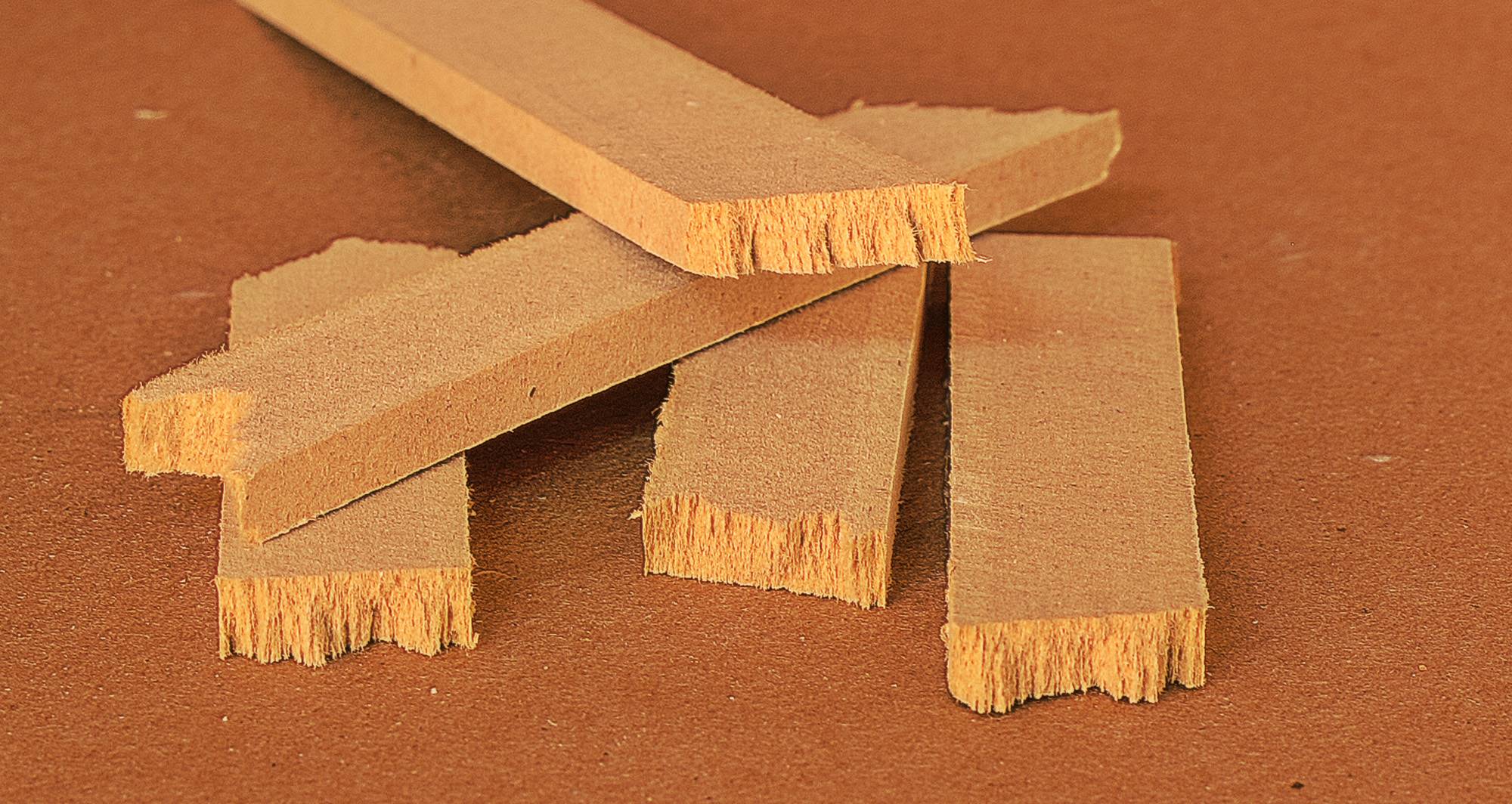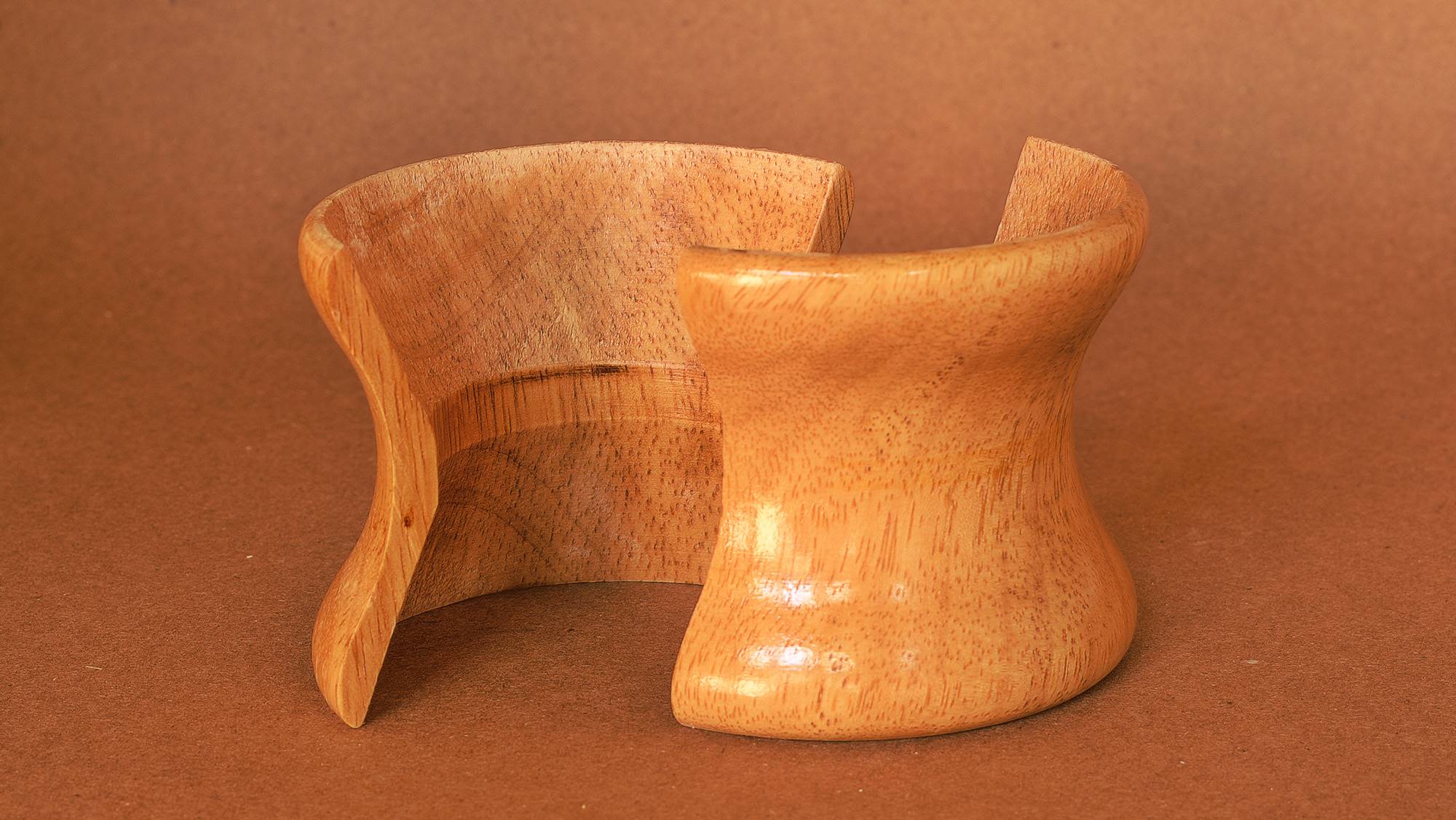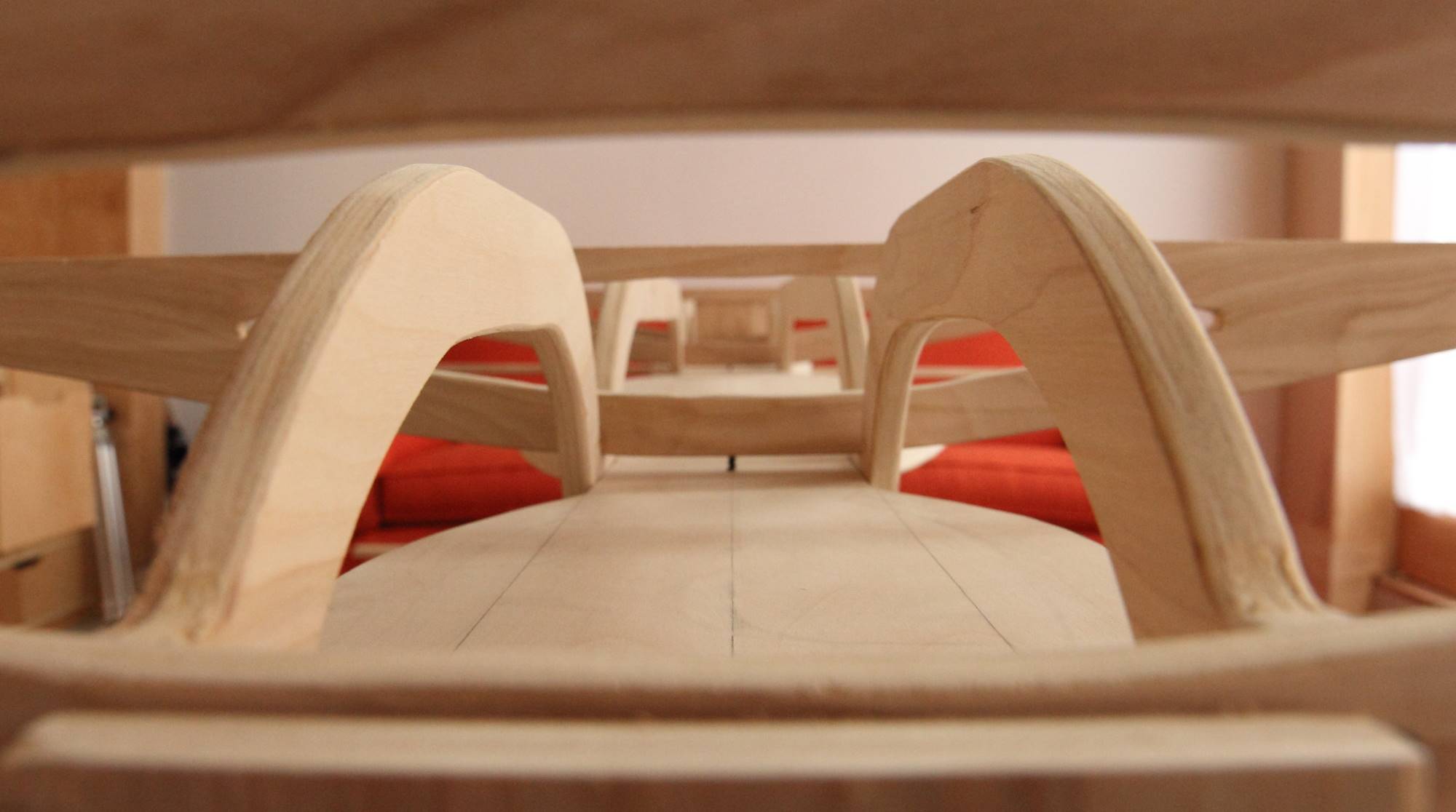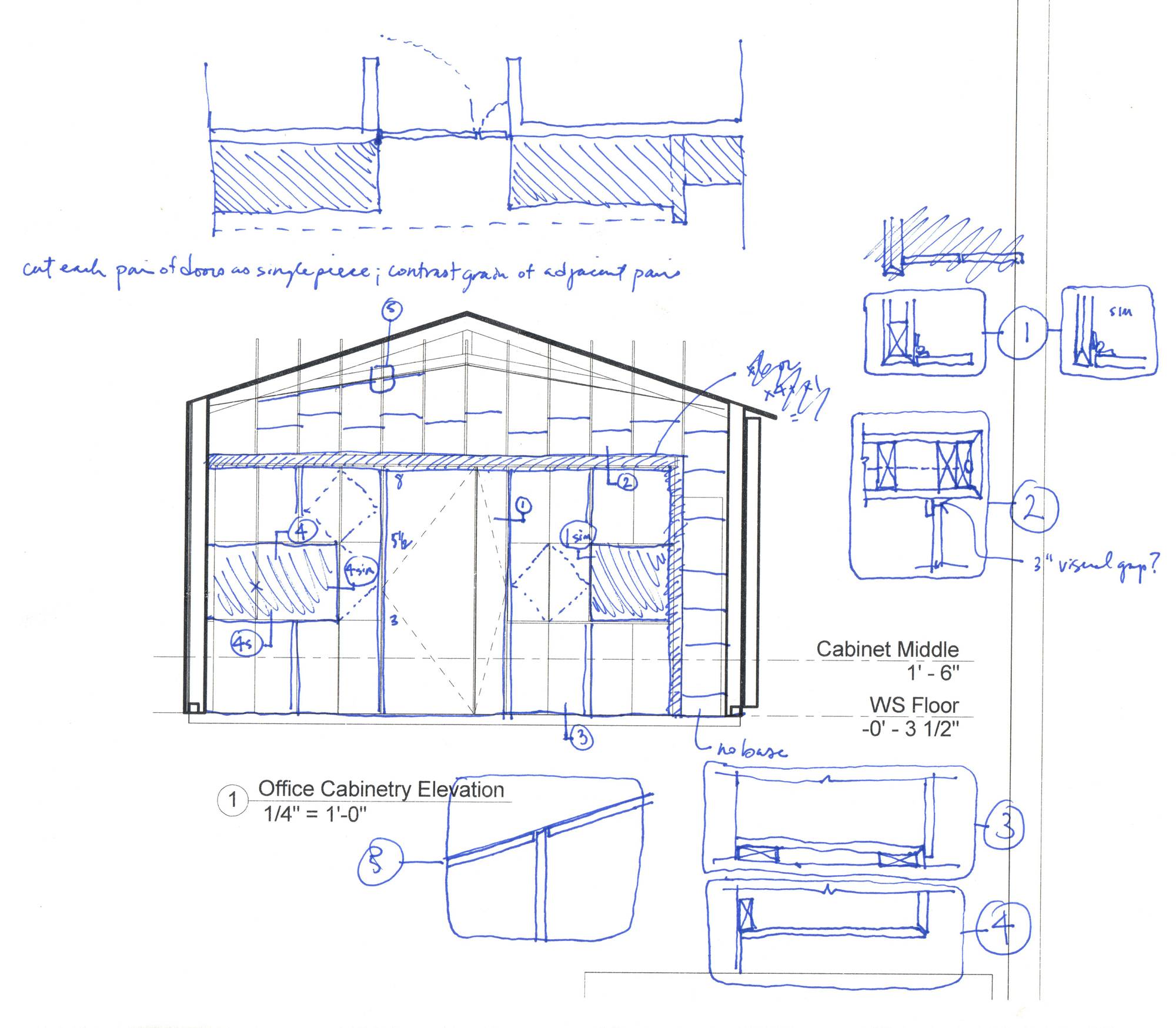MDF
I don't love most modern (meaning, in this case, in popular use after 1900) materials. That most synthetic of wood-based materials, MDF (medium density fiberboard, in case you were unfamiliar with the stultifyingly generic name of this extraordinarily generic material), is a bunch of sawdust glued together. It's about as exciting as that sounds. MDF cuts cleanly, it machines well, and assuming you dress up the cut edges, it takes paint like a champ. There's nothing I'd rather paint than some smoothly sanded MDF. I like MDF. I'd trust it to babysit the kids, and I'm sure it would be a champ about doing the laundry. There can be health concerns related to its fabrication, unfortunately -- earlier versions used formaldehyde-based adhesives, and the dust released by cutting it is exceedingly fine and uncontrollable. Most importantly, it's got no character. It's just stuff.

Wood
Wood, on the other hand, does have character. A slab of wood is glorious in its unpredictability: it grows, shrinks, and warps with changes in temperature and humidity. The grain can be a whorl of changing angles and radii, forcing saws and planes off kilter millimeter by frustrating millimeter. Even the most careful, featherboard-aligned, table saw-calibrated rip cut is really just an approximation of a straight line. Wood smirks at your puny efforts to regularize it. And, even though that approximation of a straight line can be pretty good initially, just you wait. Tomorrow, when that cold front blows through, it won't be. The dimensions of the front doors to my office have changed every single day this spring with rain, heat, and sun.
There are other limitations, too. For example, if you want a surface larger than several inches wide, then you end up gluing stuff together. It's expensive, and depending on what kind of wood you want to use, it may be difficult to obtain or contribute to deforestation or have other environmental or rights issues attached to it. The commodity woods used in composites generally don't have those issues.

Plywood
So, what's the middle ground? Plywood. Like so many quasi-natural, quasi-synthetic materials, it's fragments of natural stuff glued together. Thin sheets of wood, in this case. What's interesting about plywood is that, as a material, it negates most of the characteristics of its natural consitutents: it's easy to cut with a motorized saw, it doesn't shrink or expand, and its propensity to warp is limited, compared to solid wood. It's usually cheaper than solid wood, too. But it is very difficult to work by hand because of the adhesive and alternating grain patterns in the different layers, and it has a tendency to splinter without special treatment. But it comes in big sheets, meaning you can think about it like a big surface rather than individual pieces, like boards.
All of which is to say that plywood is not interchangeable with solid wood or MDF. It's different stuff, and it should be treated differently. Several of our initial projects here at Work5hop have been about exploring those qualities -- how do you stay true to plywood's character while best taking advantage of its qualities?

Choices
While wood is my preferred material because of its character and tradition, one of my interests is in not becoming a crochety old man, set in my ways before my time. So I work with many different materials. They each have their own joys and issues, but the search for a material's natural strengths is a fascinating one. MDF simply should not be used like wood, nor vice versa. And plywood, so frequently interchanged with both, is neither.
The truth is that our relationship to natural materials has changed. Builders ten generations back built entire structures using raw materials which were superior to what we now use in sparing quantities for small pieces of furniture. But we can now clad our homes in synthetic materials which will last a century with only a couple of repaintings; there are tradeoffs in the progress of materials science and the decline of natural resources. The meaningfulness of that, to me, is that the areas to explore aren't the traditional ones -- they're the areas of relatively unknown synthetics. Where we could once depend on the pure character of wood to elevate a piece, now the design must take the forefront.
